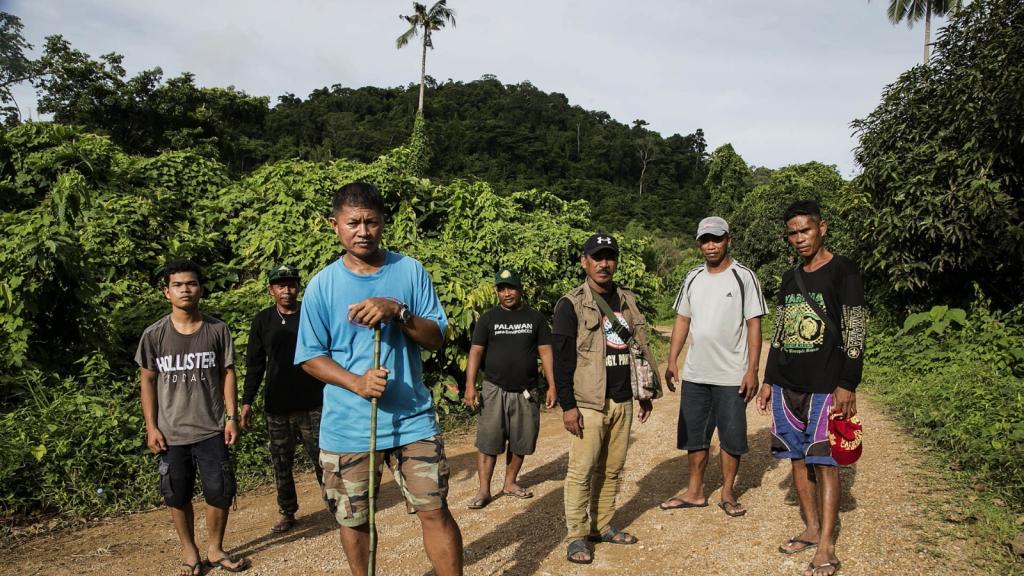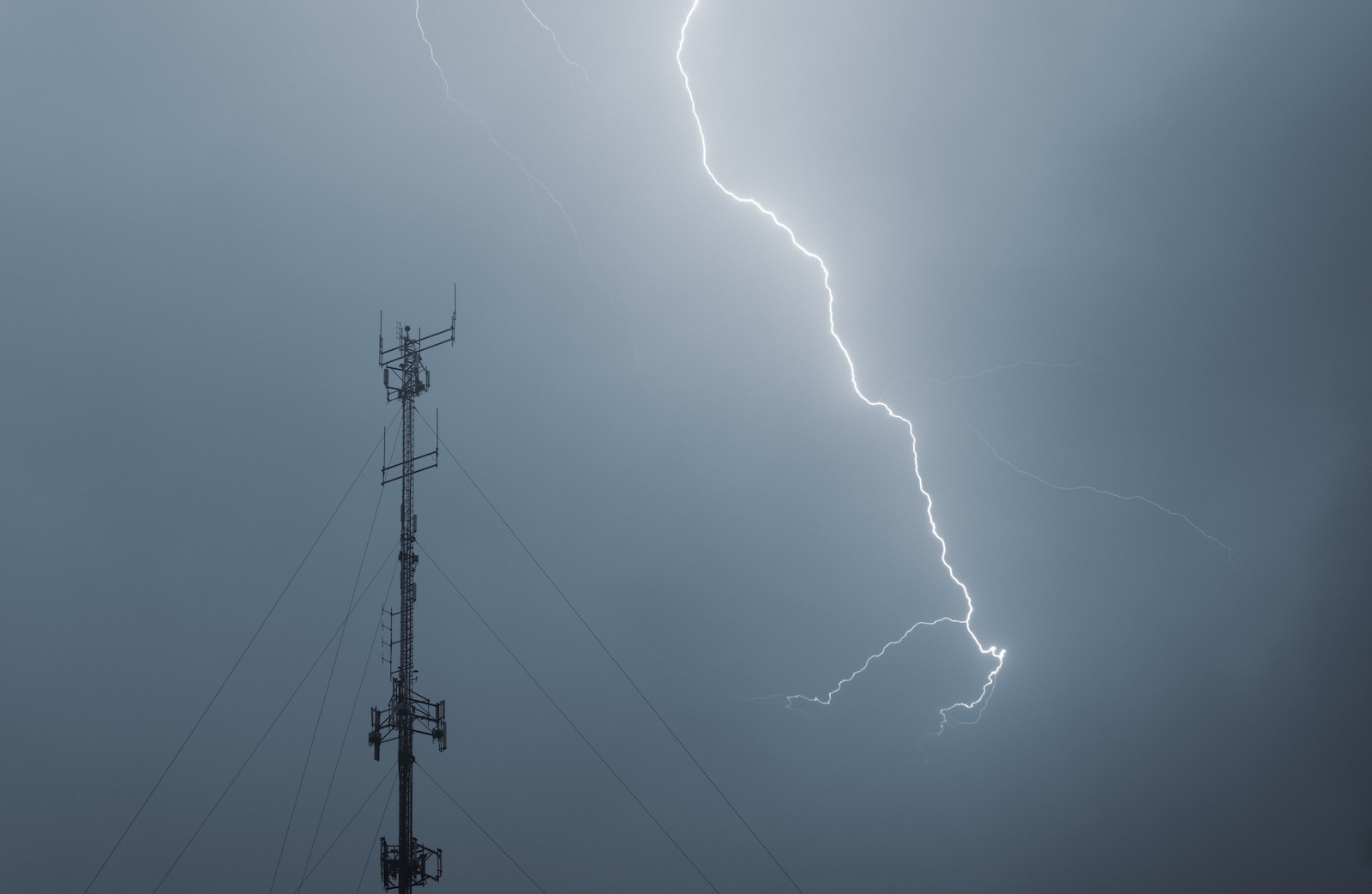From rain to snow to unbearable allergy days, the weather has a lot of control over how we live our lives. For many people, an unexpected bout of inclement weather might mean having to cancel a picnic or grabbing an umbrella on the way out the door; for businesses with large revenue streams, a poor forecast can mean thousands – if not millions – of dollars in losses.
Which is part of the reason a new industry has cropped up in the last several years, providing more detailed weather data to entities with the ability to pay for it: private weather forecasting.
In essence, what private weather forecasters provide to their clients – companies ranging from sports teams to cities to diner-style restaurant chains – is hyperlocal data combined with hyper-specific weather advising. While forecasts generated from the National Weather Service’s public data streams might provide a solid weather forecast for a given zip code, county, or a city, private weather companies claim to be able to narrow that information more accurately, even hone a forecast to an area the size of a football stadium.
That level of specificity might seem excessive, but private weather companies argue their services are worth it, given the growing uncertainty businesses face in relation to extreme weather.
“I have seen first-hand how weather forecasts without context can negatively impact operations,” said Shimon Elkabetz, a former Israeli helicopter pilot turned co-founder of private weather forecasting company Tomorrow.io, during a 2021 Congressional hearing on last year’s Pacific Northwest heatwave. “In fact, I faced multiple near-death experiences related to the weather.”
More accurate, faster weather updates can certainly save lives. Giving cities more of a heads up about when and where a major storm will land, for example, can give them time to alert high-risk residents and implement evacuation measures. Better climate risk modeling – another growing private sector – can help communities allocate resources appropriately to maximize flood resilience.

But private weather forecasting doesn’t always have to do with life and death scenarios. According to Tomorrow.io, their clients are looking for a range of information and advice related to the elements: some municipalities want to know precisely when and where they should prepare their snowplows on a given winter day. Companies like Uber Eats and Denny’s use this weather information to help them plan weather-based promotions — say, a rainy day special or a delivery deal when customers are less likely to venture out.
With severe weather impacts top-of-mind as climate change progresses, private weather companies likely have a permanent place in the weather market. Some companies, municipalities, or even individuals with large revenue streams or extreme wealth will always be willing to pay for slightly better data. But are smaller, less affluent communities that rely on federal weather resources being left behind?
When it comes to weather data, the National Oceanic and Atmospheric Administration, or NOAA, has been at the heart of how Americans receive their forecasts for decades. Information that is ultimately transformed into weather data comes from two sources within the agency: the National Environmental Satellite, Data, and Information Service, or NESDIS, and the National Weather Service. NESDIS manages satellites that take atmospheric observations — like humidity and pressure — that are necessary components of weather forecasting. The National Weather Service then takes that information and combines it with its own weather data that it gathers from radars closer to the Earth’s surface. It then uses algorithms to produce the weather forecasts we’re used to seeing.
Legally, NOAA is responsible for providing weather products like forecasts and storm warnings at a national scale. While this means that every American will receive weather information, there is a trade-off. The supercomputers that NOAA uses cannot process unlimited data. That means the agency can either provide the entire country with useful, though not necessarily hyper-local forecasts, or it can give exceptionally detailed forecasts for only a limited number of places. By virtue of statute, the agency must choose the former approach.
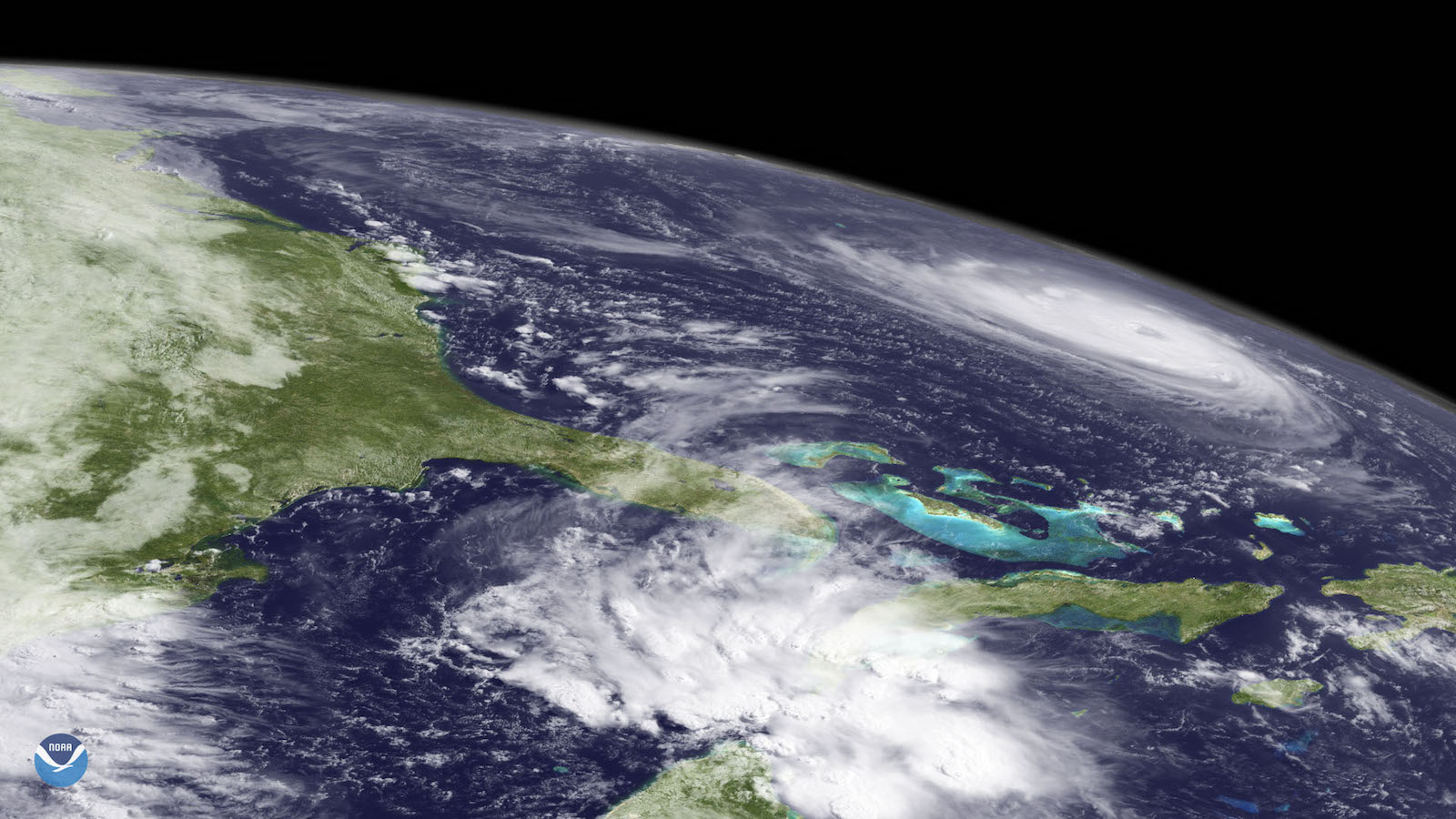
Private weather companies, in contrast, have no such mandate. And since they have access to their own supercomputing resources (and arguably more advanced data analytics) they can leverage some of the raw, publicly-available government data from NOAA and run it through their own algorithms to emphasize depth over breadth.
In many ways, this practice is not new; anyone is free to use the government’s raw weather data, but it’s not exactly user-friendly. As a result, there’s long been a market for interpreters. Without realizing it, many of us already rely on some level of private weather analysis: The media company AccuWeather, for example, has powered weather forecasts on many local news stations for decades. The company, which was founded by a meteorology grad student in the early 1960s, provides a more digestible, and accurate version of the forecast that comes from the National Weather Service, supplementing that information with data from sources like the armed forces and the Environmental Protection Agency.
Using their own proprietary algorithm, Accuweather turns out what we think of as a typical weather report: “There is a 60 percent chance of rain tomorrow,” or “the humidity is 80 percent,” or even “the dew point today is 70°F.” (The National Weather Service provides similar forecasts but using its own algorithm and free of charge.)
Newer companies like Tomorrow.io view that kind of conventional forecasting as a solid foundation, but want to take it a step further. According to Thomas Cavett, Vice President of Strategy and Operations at Tomorrow.io, we’re overdue for a realignment that goes beyond what the weather will be and tells us what to actually do about it. He notes that “the subtle nuances and differences” in weather variables like temperature and wind speed are beyond most people.
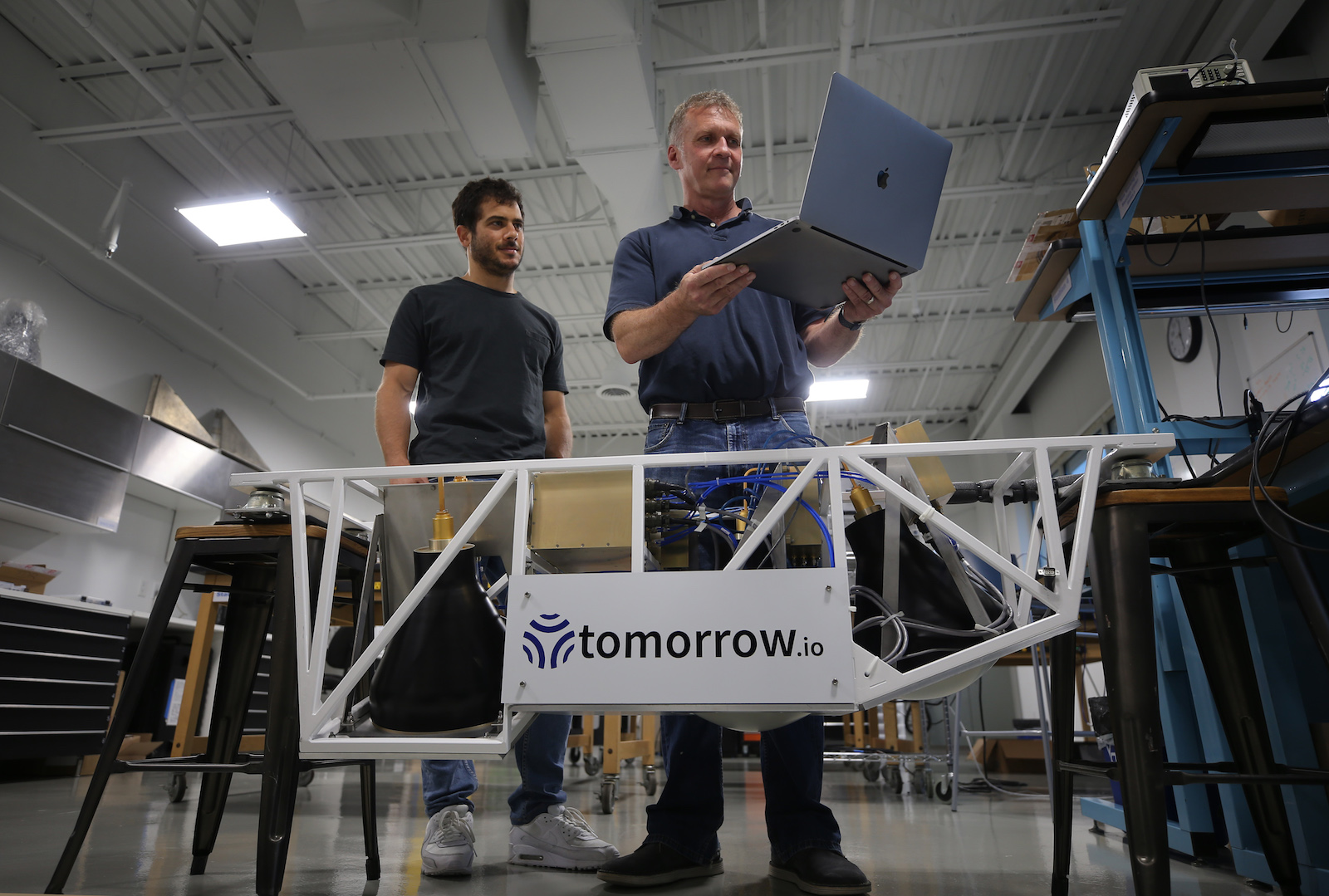
“Telling an airline pilot ‘Avoid this specific flight zone between 9:35 and 10:27 because the weather is going to be dangerous for the specific aircraft that you’re flying’ is much more useful than telling them ‘There’s a 40% chance of rain over Western Colorado today,’” Cavett said.
With climate change intensifying certain types of extreme weather, specific directives may prove to be more helpful than straight forecasts. Following the record-breaking rainfall from the remnants of Hurricane Ida, for example, both New York City and Hoboken, New Jersey, decided to work with private weather companies to help them augment their weather preparedness capacity.
While private weather operations like Tomorrow.io have historically run parallel to the weather missions of the National Weather Service — in some cases augmenting the federal work — they are not the only type of player in the private atmospheric science market. Climate risk analytics is a field that ingests climate data, as opposed to weather data, to provide advice on how to prepare for a changing climate.
Preparing for the weather is often a question of limited time scales. What happens today, tomorrow, or even at the end of the week is “weather.” What is likely to happen in 10 years is “climate.” Protecting infrastructure and assets from a changing climate needs decades of forethought. So while private weather companies might assimilate weather data to tell an airline not to fly a plane at a certain location later this week, a climate risk analytics firm might advise the airport to build flood barriers because the tarmac is at risk of being in the floodplain in 15 years.
Unlike private weather companies which have existed in various incarnations for decades, private climate risk analytics is a relatively nascent sector. The field formed partially to fill the gap created when the Trump administration gutted climate change-related research, said Rich Sorkin, CEO of the climate risk analytics company Jupiter Intelligence. In 2016, the Trump administration “effectively communicated to the world that for the next four years the federal government was out of anything related to anything material related to climate change,” he said.
While the Trump Administration’s choices were bad for the world and the country, it was good for Sorkin’s business, which launched in 2018. He argues that the data processing and assimilation techniques that Jupiter gained from both its atmospheric scientists and data scientists allowed it to push its climate risk work further and faster than the federal government could — a claim echoed by other private forecasting companies, like Tomorrow.io.

Today, Jupiter’s clients include services industries ranging from insurance to energy utilities to wealthy individuals with “expensive homes in disaster-prone areas” — and even a few federal agencies. Private hospital systems use them to help determine whether their hospitals might be in flood-prone areas in the future, and how they should plan in the long-term. The company provides climate assessments to infrastructure managers who might be planning new roads or highways. “Customers understand the impact of climate change on their businesses, their financial portfolios, their supply chains, and the health and well-being of those societies,” Sorkin said.
Like Tomorrow.io, Jupiter also has a service where individuals or small businesses can purchase smaller volumes of information than multinational corporations might need. “Say someone you know is about to buy a house, and then in 15 years your mortgage rates are going to go up because your risk of default goes up because there’s a 1 percent chance that you’ll have four feet of flooding,” Sorkin explained. “You might think differently about what house you buy.”
There’s little doubt better weather and climate data can help people plan for the future. But not everyone can afford access to private forecasters. The pricing for Jupiter Intelligence’s services, for example, ranges from a few hundred thousand dollars to a few million dollars. (Tomorrow.io did not disclose its full list of prices to Grist, but the company stated that its fees are the industry standard.)
Jen Sawyer is the Emergency Management Coordinator for Carteret County, North Carolina. With some cities in Carteret County ranking among the worst in the U.S. for hurricane damage, the county mainly relies on the National Weather Services to provide its weather data. She said that having access to tailored weather forecasting tools could be beneficial for the community — but it wasn’t always financially feasible.
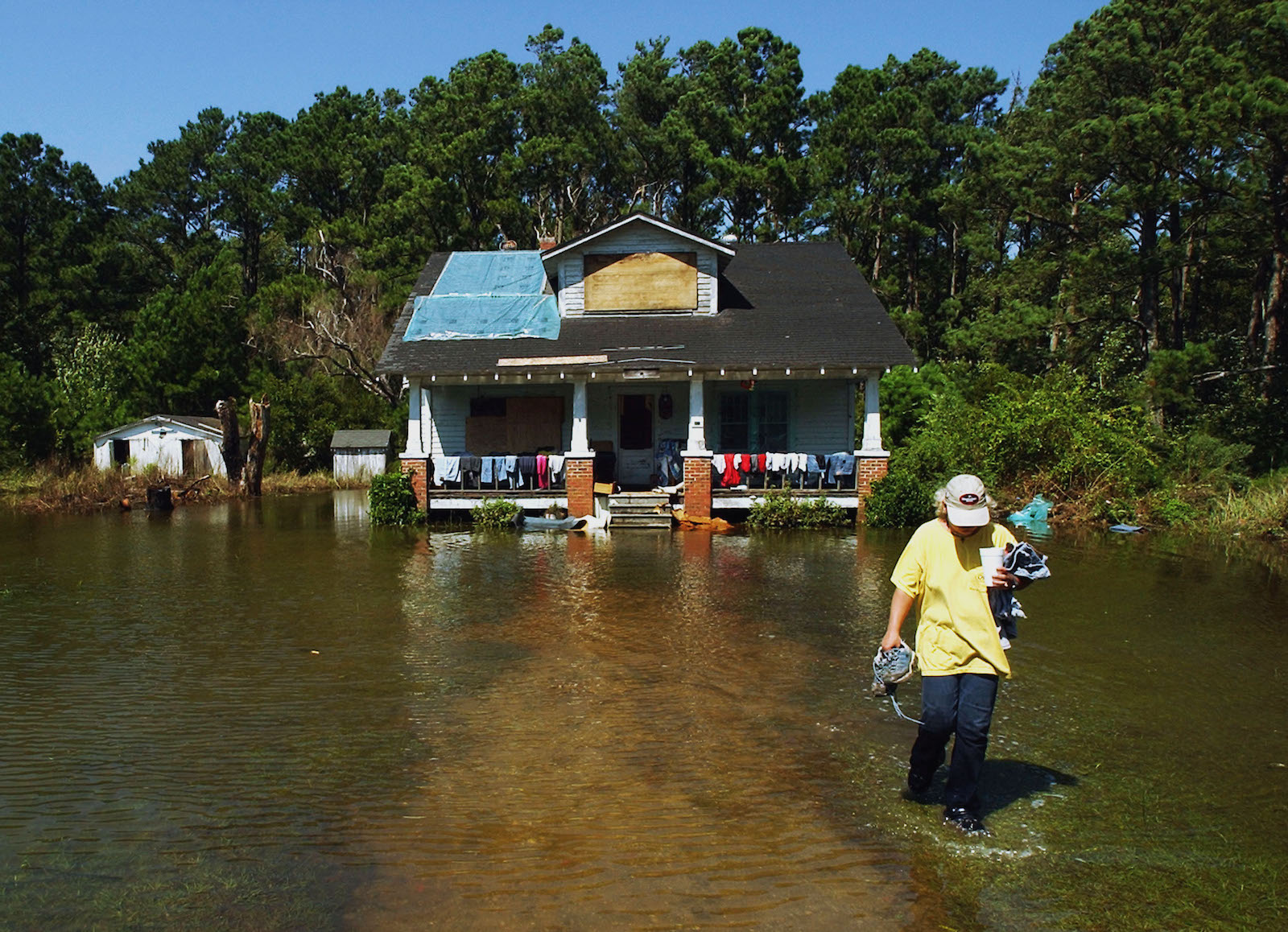
“I found that we don’t always have the funding available for specific resources,” she said. “I definitely think that it would be beneficial if somebody had the funding to be able to support additional services like that.”
Like Sawyer, Don Walker, Communications Director and Public Information Officer for Emergency Management in Brevard County, Florida, said his community relies on government weather data rather than information provided by private companies — and that it wasn’t necessarily holding the county back. Both Sawyer and Walker said that in-and-around hurricane season, the National Weather Service is in close contact with their offices. Sawyer said the nearby National Weather Service office provides “detailed briefings as we get closer to the onset of a [severe weather] event.” The agency also refines and updates these briefings over time.
In Florida, Walker highlighted that the National Weather Service not only provides these briefings, they will also station agency staff in Brevard County’s Emergency Observation Center. This allows for real-time and changing forecast information that can turn into specific advice for Brevard County’s emergency managers.
This in-office National Weather Service presence performs a similar, hyperlocal weather information service as companies like Tomorrow.io. Walker said that having National Weather Service support staff in their office allowed the community to get information on changes in hurricane tracks more frequently than the three-hour reports that come from the National Hurricane Center.
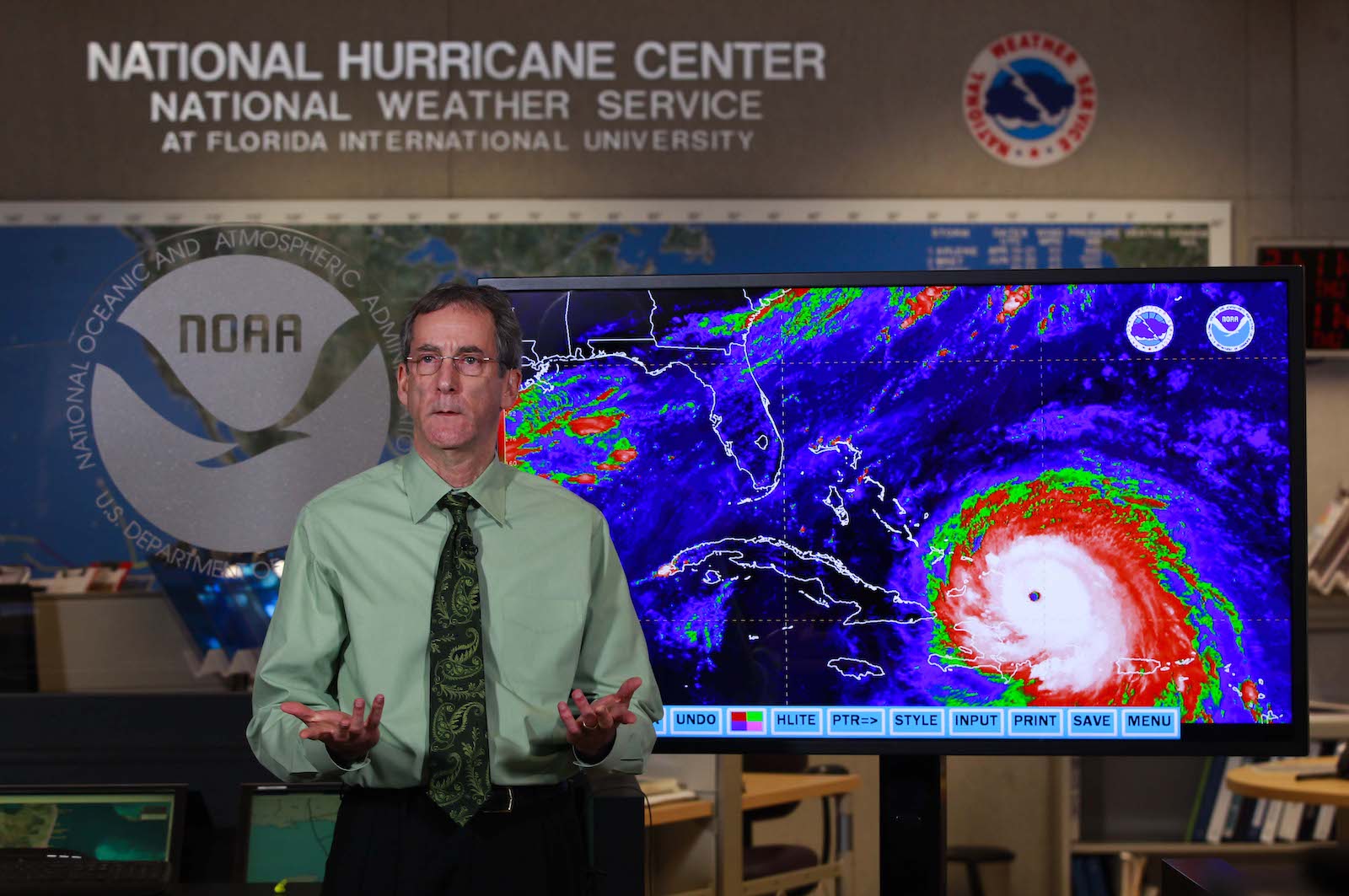
The National Weather Service does not have an endless number of support staffers, or an office in every community, to serve every municipality in this way. So these limited resources often have to go to communities at the greatest risk. As climate change makes commonplace weather patterns more volatile and uncertain, it’s possible that new weather information gaps could crop up for communities that are not on the National Weather Service’s top priority list and yet not affluent enough to afford private forecasting data.
Sawyers says this situation could put many emergency managers in a very precarious situation. “We use that information to educate our decision-makers within the county,” Sawyer explained. “A lot of our public officials are responsible for making very important decisions, such as evacuation orders, and a lot of times those elected officials don’t have that knowledge base to effectively make a decision without that input from the National Weather Service.”
The private weather and climate sectors say they are trying to take steps to equitably fill these information gaps for communities that can’t necessarily afford their services. For example, Jupiter has a program called the Jupiter Promise initiative that works with under-resourced communities to better project “climate-related” perils like flood, extreme heat, and fire, and Tomorrow.io has a free weather app with in-app purchases for $25 that include features like six hours of real-time forecasting and 14-day outlooks.
Additionally, both companies have mentioned future plans to provide some degree of openly accessible data. Tomorrow.io also has a cooperative research and development agreement with NOAA — a collaboration that allows the agency to validate the company’s spacecraft and radar systems. Some of the results of this program will be open-source, Cavett said.
Companies in the private weather and climate spaces see these trickle-down societal benefits as helping justify the costs of their services. Because many of these entities work with public sector agencies, they argue their services can help the general public – even if that public doesn’t have access to the data directly. Sorkin pointed to the societal impacts of protecting supply chains, energy grids, and infrastructure as examples of how Jupiter’s work goes back to the general public. By providing climate risk assessments to energy companies, food and drug stores, and those building bridges and tunnels, he says the world might become a bit more climate-resilient.
As climate change continues, Jupiter Intelligence expects it will continue to grow its client base. Sorkin hinted that some of its data might become more affordable to the general public. But, he added, that’s dependent on the company’s financial prospects going forward.
